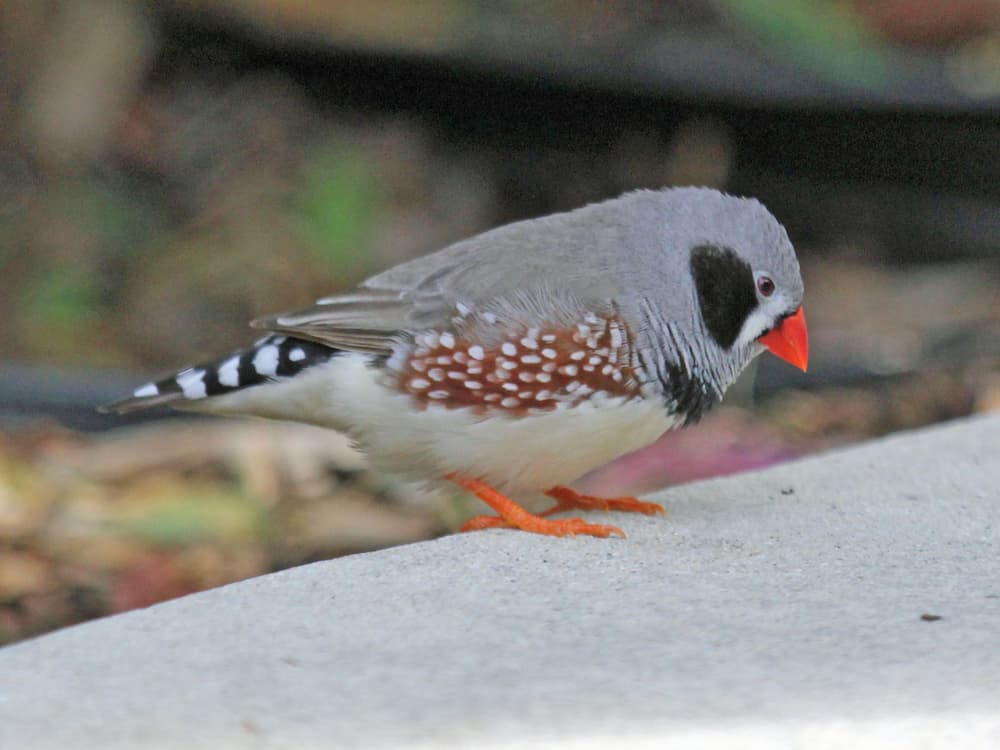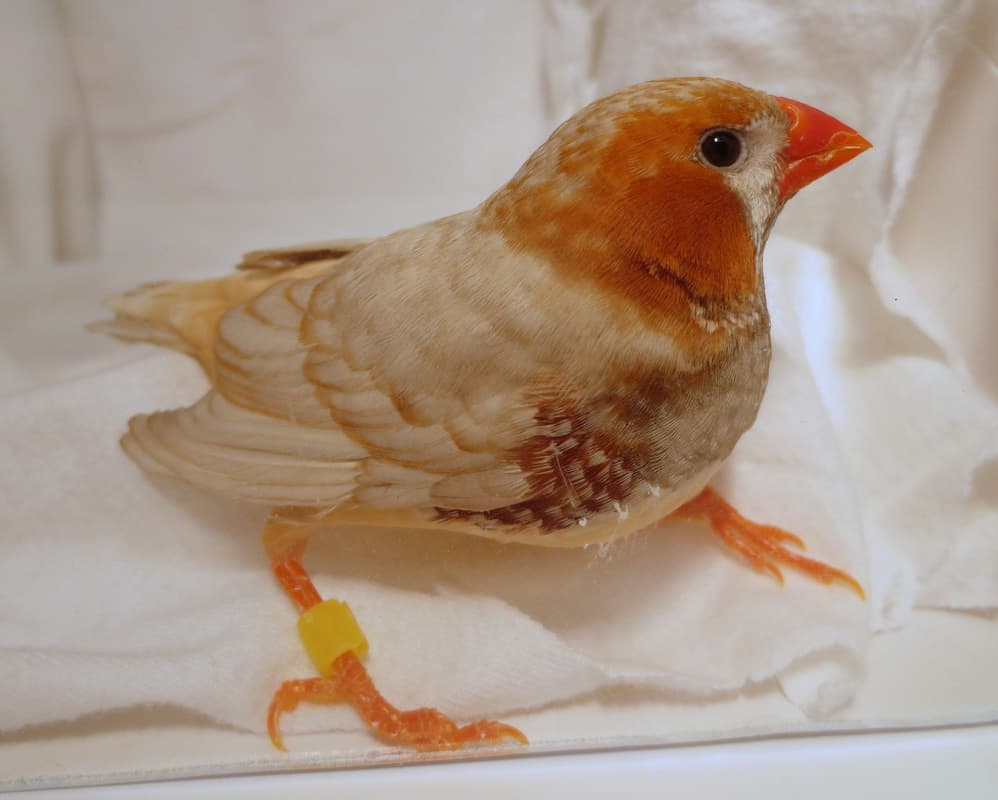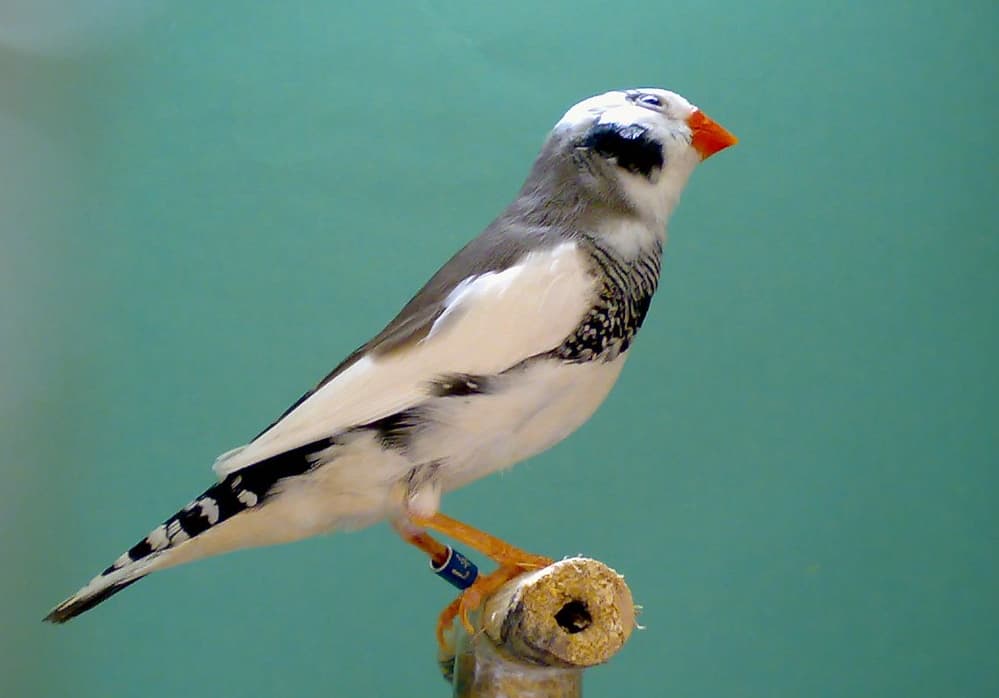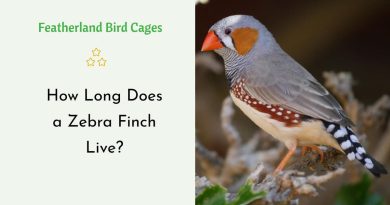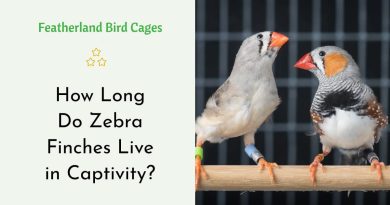Zebra Finch Mutations
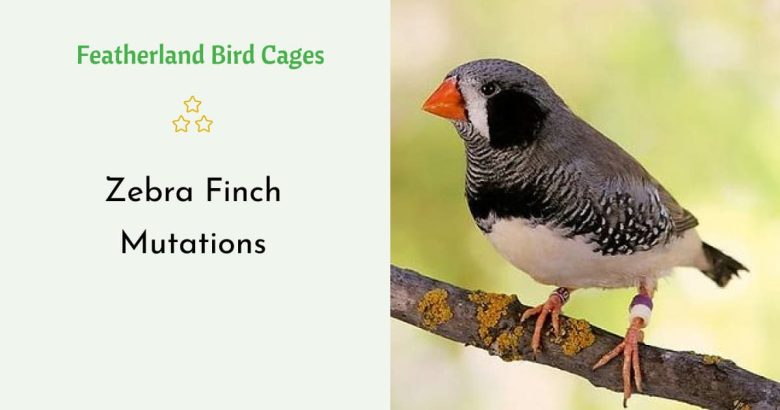
Zebra finches are a fun and easy to keep pet bird. They are a very versatile bird that can be bred into a wide variety of mutations. There are many light and dark mutations to choose from.
The most common zebra finch mutations are Fawn, Black Cheek, Phaeo and Pied. These are all dilutions of the normal wild type.
Black Cheek
Black cheek zebra finches look like normal zebra finches with the exception of orange cheek patches that are replaced by black. They also have dark brown stripes of tears on the face. These zebra finches are very attractive and make great pets.
Experienced zebra finch breeders report that this mutation is more difficult to breed than other colors. They have varied breeding outcomes but persistence will pay off. It can be combined with other zebra finch mutations to produce interesting color combinations.
The zebra finch is one of the most fascinating and unique pet bird species in captivity. They are known for their charming personalities, social behavior, and distinct appearance. This beautiful bird is worth learning more about and preserving for generations to come. The zebra finch is an important part of our natural ecosystem and deserves to be preserved for its beauty, uniqueness, and survival. Providing an environment that mimics their natural habitat can help to ensure the continued existence of this wonderful species.
Phaeo
When a breeder crosses two zebra finches that carry the Phaeo mutation, they will produce a bird with reduced pigments in all colours of its body. This produces a beautiful sheen of silver in all the different colours of the body, giving a very pale effect. It can be combined with other mutations to produce a variety of gorgeous effects such as Dilute Fawn and the lovely Penguin zebra finch.
The most common zebra finch mutation is Pied, which produces a bird that has very little colour. This is often combined with black, white or black-cheek variations to create a stunning effect.
Zebra finches are among the most popular pets in Australia, as they are free breeders and easy to care for. This makes them an ideal beginner’s pet, and there are a number of mutations available to add interest to this already fascinating species. Their wild relatives are found in arid grassy areas, where they feed on seeds such as Enneapogon sp, Panicum decompositum and canary seed. They also eat leaves of the succulent plant, Portulaca intraterranea.
Pied
Many zebra finch breeders are dedicated to finding more mutations for their hobby. Some of these mutations may require importing birds from Europe and Australia, but many aviculturists are able to find the mutations they desire locally.
Pied zebra finches are those that have less melanin in their feathers, making the black color fade and the white color stand out more. They can be heavily pied or lightly pied. The goal of many breeders is to produce a male with no breast bar and a bright orange rump, checks and flanking.
This mutation can be mixed with other zebra finch mutations to produce exotic looking birds like Silver Black Cheeks and Chestnut Flanked White Pieds. However, it is important to note that a Black Cheek x Orange Breasted hen will not produce a healthy chick as it is a recessive gene.
Penguin
Mother Nature has taken the basic colors of a zebra finch and created an infinite number of ways to combine them. This is what makes breeding zebra finches so much fun for novice avian breeders. Many of these mutations are not available in the United States, and require the assistance of a breeder located overseas or in Australia to obtain.
Penguins have the same dark cheek patches and tear markings as normal zebra finches but without the white rump bars and tail coverts. They have a rich cream color on the breast and chestnut flanks with elongated white markings rather than circular dots. In the wild, this mutation can be found mixed with Black Cheek or even Crested birds to produce even darker birds with a larger area of dark coloring. In captivity, it is often combined with other light zebra finch mutations. These mixed birds are referred to as Lightback Black Cheeks or apricot mutations.

